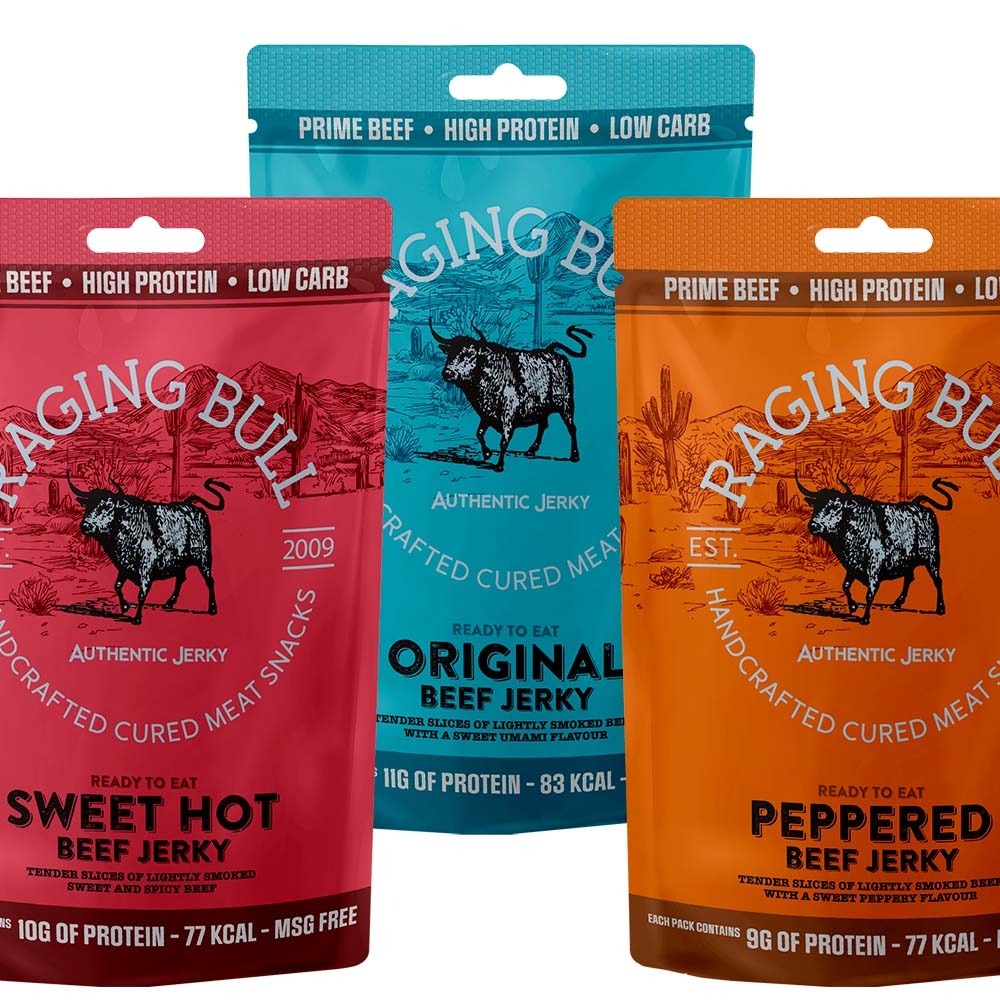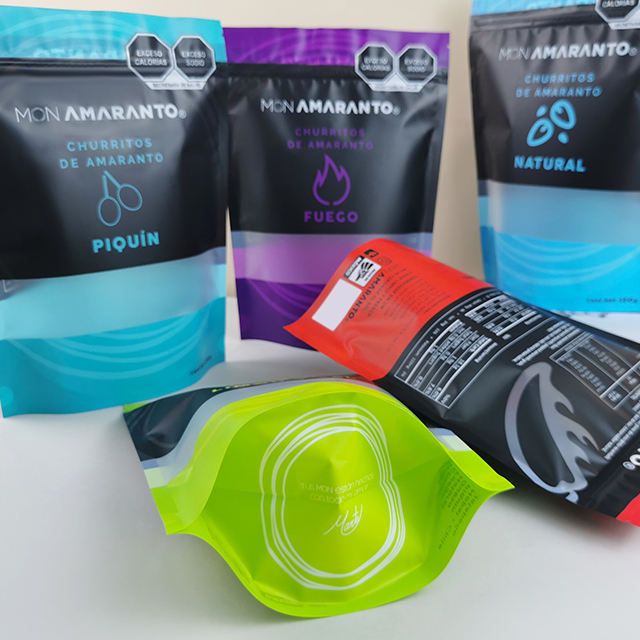Beef Jerky Packaging Bags Design: How to Build Freshness, and Brand Value
Beef jerky has transitioned from a road trip staple to a global, convenient snack and the world's favorite meat‐protein snack. With the market being so competitive, beef jerky packaging has never been more strategic. Packaging is no longer just something to wrap around a product — it’s preservation technology, brand identity and environmental responsibility all rolled into one.
As a boutique batch maker or larger manufacturer, the perfect beef jerky packaging bags can help communicate what you’re about (your brand) and control how long the jerky stays fresh as well as meet consumer expectations when it comes to environmentally friendly options.
In this piece, we’ll take a look at what separates excellent jerky packaging from its cut-rate counterparts—from the scientific intricacies of material selection to design tactics and customization possibilities—and how MTPAK Packaging is empowering brands to pack both performance and personality into every pouch.
Why Packaging Quality Matters for Beef Jerky?
Beef jerky is a moisture sensitive, protein based food product that needs effective barrier protection. Oxygen and humidity can lead to flavor degradation, oxidation, and spoilage when bugs get it before you do. Good packaging can counter these risks, and look professional to inspire confidence in the client.
High-performing jerky packaging must deliver:
Great barrier protection to keep out air, moisture and light
Good sealing and resealability to keep the freshness
Light weight for lower transportation costs
Appealing, brand-quality graphics that communicate flavor
Understanding the Materials Behind Beef Jerky Packaging
The proper material means not only guardability, but also ecological impact and look. Here is an overview of options that are common to most:
| Material | Key Features | Sustainability Level | Typical Applications |
|---|---|---|---|
| Mono-PE / PET | Excellent durability and moisture resistance; supports vivid printing | Recyclable | Standard jerky pouches for retail and export |
| Laminates | Maximum | recyclability | Exports |
| Kraft Paper + Foil Laminate | Natural texture with metallic barrier layer for oxygen protection | Recyclable (foil-free variants available) | Premium artisanal jerky lines |
| PLA (Compostable Film) | Plant-based, fully compostable under industrial conditions | Certified ASTM D6400 / EN13432 | Organic or sustainable brands |
| Hybrid (Kraft + PLA) | Combines paper’s natural look with compostable film barrier | Low-carbon, compostable | Specialty products and eco-conscious labels |
| Nylon / EVOH Films | Exceptional oxygen barrier for export-grade jerky | Moderate; depends on recycling stream | Long-shelf-life or vacuum-sealed products |
Hybrid materials like kraft paper paired with a PLA laminate are common. Such combinations keep an item’s aroma and texture while achieving a sustainable solution. Each structure is designed with the brand’s moisture, aroma, and shelf-life specifications.
Why Flexible Packaging Works Best for Beef Jerky?
This section matters most when it’s tied directly to jerky: flexible pouches are not only lighter than tins and rigid tubs — they also better protect dehydrated meat snacks.
According to the Flexible Packaging Association (FPA), pouches can use up to 70% less material, generate fewer transport emissions, and create less manufacturing waste than rigid formats. Longer shelf life from effective barriers also helps reduce food waste (a meaningful source of global GHG emissions), lowering total carbon impact.
Five Key Elements of Beef Jerky Packaging Design
The perfect beef jerky packaging design is eye catching and speaks to what makes your product special. Here are five design principles that will help increase sales and brand perception:
Premium Finishes & Material Texture
Surface finishes dictate how you want your brand to be perceived. Made with matte or soft-touch lamination for a high-end look, and kraft textures to promote an artisanal and hand-wrought feel. 'Pop' flavor profiles and brand logos can both be accentuated through the use of metallic or spot-UV enhancements. These tactile details make your pouches pop on-shelf and encourage consumers to engage with product in the physical Sense — a critical preliminary stage of the purchase journey.
Functional and Resealable Formats
The functionality of the package is a critical feature, as beef jerky is eaten over an extended period.
• Stand-up pouch Also flat bottom to be able to stand alone on the shelf.
• The press-to-close zippers and resealable locks keeps food fresh between uses.
• Scissors fingers: hang hole and lightweight flexible film for easy carry on travel, office, outdoors. Quality, in terms of practicality and barrier performance are items that have to go together.
Clear Brand Identity and Typography
Good design communicates quickly. Consumers want flavor, protein level and where the product comes from in a snap.
• Follow distinctive, readable font style against clear backgrounds.
• Use one color for a group of flavors or type of protein.
• Match images and storytelling to the tone of your brand, be it modern, natural or adventurous. Mixing it up with type, color and layout, brands can form a distinctive identity that’s maintained through product lines.
Transparent Windows or Product Imagery
Consumers “eat with their eyes.” A partial see-through window that shows a real product image allows shoppers to feel the quality and texture of the jerky they are going to purchase. This level of transparency creates trust — particularly when it comes to natural or handcrafted products.
When windows aren’t an option in export packaging, high quality printed photography can re-create the same sensory experience while maintaining barrier strength.
Sustainability and Ethical Messaging
Today’s snack buyers don’t just care about flavor — they also judge the values of the brand. Including some info around sustainability and ethical sourcing to your packaging automatically makes it more valuable.
“100% recyclable,” “compostable film,” “grass-fed” and or “no added preservatives” may be printed in small but visible places to set your brand apart. Environmentally sustainable packaging shows the market that you are on-trend with the consumer, who is focused on health, convenient and responsible lifestyle choices – which is a good thing for your business!
Innovation and Technology in Jerky Packaging
Innovation is defining the next generation of beef jerky packaging. Special materials, digital printed patterns, and automation have altered thinking on both design and function for brands aiming to create environmentally friendly yet visually appealing products.
Smart Packaging
Consumers can scan QR codes or NFC tags to track where ingredients came from, check on nutritional information or learn brand stories. For exporters, the value of these technologies are in building transparency and lowering chances of counterfeits.
Next-Generation Materials
Simple and mono-material laminates (mono- PE or mono- PP) aid recycling, while new compostable options like polyhydroxy alkanoate (PHA) and seaweed-based films offer high barrier without the need of petrochemicals.
Manufacturing
Digital printing also allows for fast turn-a-rounds and small orders; say, for product launches or seasonal offerings. Lamination without a solvent lowers emissions and meets the requirements for food contact.
MTPAK Packaging also invests heavily in these technologies to provides greater accuracy, speed and ultimately sustainability—necessary to ensure that every jerky pouch not only meets market demands but also environmental standards.
How to Customize Jerky Bags for Your Brand
Custom packaging is so much more than aesthetics — it’s the strategic link between your product and your customer. Brand story telling to shelf efficiency and export compliance, every aspect of your jerky pouch can be customized for both the function and identity. With an established flexible packaging company, these design aspirations become a reality on the bottom line.
Tailored Design Meets Technical Precision
A great design begins with your brand, but wins through precision manufacturing. At MTPAK Packaging we bring together artistic flexibility with engineering know how to tailor the following aspects.
点击图片可查看完整电子表格
Every pouch is developed through consultation and sampling, ensuring that the final product fits both your brand story and your production line. Contact account@mtpak.com or visit mtpak.com for technical consultation on jerky packaging solutions.
Questions about Beef Jerky Packaging
Q1: What kind of packaging does beef jerky suit most?
Ideal for jerky are stand-up pouches added with a zip-top and plate-form bottom made of a high barrier multilayered material, says Lorena Weisburg, marketing associate at Ossid. They keep the product fresh, prevent any moisture from getting in and ensure it’s lightweight (all of which are essential to on -the go snacks).
Q2: How to make beef jerky's packaging more sustainable?
It can be recycled or composed using materials such as PLA, mono-PE or kraft laminates. Reduced VOC emissions - which come at the expense of print quality are no longer an issue if you employ water-based inks and solvent-free coatings.
Q3: What appeals to customers in beef jerky packaging?
Matt finishes, prominent type and obvious product windows: all this helps communicate not only flavor but quality. Combine very neutral tones with stripped the design to underline that our product is authentic, good for you and rich in protein.








